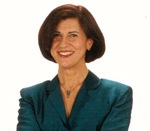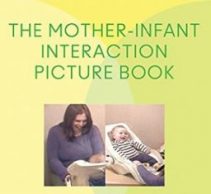It’s Never Too Late: Healing Prebirth and Birth at Any Age – A Reflection...
Early in the writing of the first draft of It’s Never Too Late: Healing Prebirth and Birth At Any Age, I discovered there were steps, especially in the embryo’s story, that even after studying, I had difficulty envisioning. At the time I wondered, could I leave these hard to reach, yet essential steps out of my written examination? Would anyone besides experienced embryologists and biodynamic craniosacral therapy teachers notice? It didn’t take long to come clean with myself, that if I skipped intricate steps in my understanding, I would only further reinforce what was at the root of my amnesia, and that in order to be whole myself, I had to find out what was going on.
Clinical Applications of the Polyvagal Theory: A Reflection
If Stephen Porges asked you to co-edit a book with him, what would you say? With my passion for Polyvagal Theory, my love of writing, and my friendship with Steve, my answer was an unhesitating “yes.” The process of bringing this co-edited book to publication has been a shared ventral vagal inspired adventure.
In Clinical Applications of the Polyvagal Theory, Steve’s intention was to gather a group of clinicians whose work was informed by Polyvagal Theory. Although the beginning chapters are written by recognized leaders in the field of trauma, this book came out of Steve’s commitment to ask people who were emerging as leaders to write chapters. Steve wanted this edited collection to feature clinicians who were in the trenches creatively bringing Polyvagal Theory into their work every day with complicated clients. As he traveled and gave presentations, Steve would talk with people who were incorporating a foundation of Polyvagal Theory in innovative ways and invite them to be a part of our book project. We began calling our chapter contributors our “Polyvagal family”, and each time Steve emailed me to introduce a new potential author, he said, “Here’s another member of our family.” I came to know our chapter contributors through emails, phone calls, and Skype conversations. It was a sweet experience of autonomic attunement and the ease of connection that brings, in these beginning Polyvagal partnerships.
This edited collection was a labor of love and a delicate process of helping our contributors incorporate the language of Polyvagal Theory.
On Writing The Practice of Embodying Emotions
One thing I have learned about myself is that I am intuitive. An idea appears to spring forth from the depth of my unconscious, without much form but with enough felt sense conviction to pursue it one way or the other. It acquires shape and clarity and is reality tested in the process of expressing it, teaching it, or writing about it. It is not unlike the process that a painter might undergo in bringing an inspired image in one’s mind’s eye to the canvas. I now understand and accept this as my creative process
The Power of Attachment – Author Reflections
When I began speaking with Sounds True about a written book following my audiobook, Healing Your Attachment Wounds: How to Create Deep and Intimate Relationships, I wasn’t sure what to expect, as I have always considered myself more proficient with the spoken than the written word. Nevertheless, we started the journey to The Power of Attachment, which I actually started over 12 years ago, but somehow, it never felt finished to me. I found that progress often stalled with new research and trying to contain everything about attachment theory between the covers of a single book.
Meditating with Character
I've learned about the simple bliss of making contact with my experience through meditation and character structure. My 'heady' part can now more easily dissolve into the ease of just sensing the softening of the scalp. In fleeting flashes, there is no me or mine in the way I conceive of me or mine in my every day mind. There's just this body, sitting and noticing sensations arise and fall, nothing to do, nowhere to go. A sigh on the out breath as my shoulders drop a few millimeters and I soften into the earth.
Meeting the Needs of Parents Pregnant and Parenting after a Loss
We’re committed to spread information to parents that the unborn baby’s personality and development can be impacted during pregnancy. Today we have solid research to support that the mother’s stress during pregnancy may indeed impact a child’s personality. Thus, an intervention to help parents know ways to engage with their unborn baby, whether in a low risk pregnancy or one that follows a perinatal loss is an important goal. Our book outlines specific interventions to use at each stage of pregnancy that facilitates prenatal parenting to connect with the unborn baby. We hope that you find it useful resource, and we thank you for your work with bereaved families.
The Sacred Path of the Therapist: An Author’s Reflection
There was a time when I couldn’t imagine how to integrate my spiritual path and my Western training as a psychotherapist. I was traveling down to Peru periodically over a 10-year period, stepping into the mystical non-ordinary world of the shaman, while working as a clinical supervisor in a psychiatric hospital. I felt hurled down to South America, as if literally picked up and thrown down there by the circumstances and synchronicities in my life. I knew I had a choice, but not really. Destiny was calling to a tradition so foreign from my upbringing, but it activated a deep knowing and memory of ancient wisdom and truth.
My first book, Eyes of the Jaguar, was about the beginning of this mystical journey. I didn’t consider myself to be a writer and felt as if this book wrote itself through me. The words of the book refused to stop moving through my thoughts until I put them down on paper. It felt as if it was part of my spiritual initiation process, with a life of its own and an impact that I could not have known.
I believed strongly in a holistic interrelated paradigm of body/mind/spirit, as taught in the shamanic tradition. I meditated on how to integrate it all, and the inner wisdom of my soul whispered back, “It will integrate.” I learned to trust my inner guidance, and as time went on, I was able to see the integration within myself. As the therapist and the shaman became one within me, my work became more integrated.
Other Than Mother
Part of me always anticipated motherhood with warmth, accompanied by an inner mantra: 'I'll have kids by the time I'm 30'. I guess this was my personalised version of what Melanie Holmes calls the 'motherhood catechism' in her book, The Female Assumption: The Schooling of Females to assume that they will someday become mothers (Holmes, 2014: 9). It's strange to recall that even by the late 1990s it wasn't obvious, to me, at least, that child-bearing was and is a choice - the first time that I had paid attention to the pronatalism of our societal messages.
Writing on the Moon
Writing on the Moon is fifteen years in the making and it is about imagination and originality—two crucial elements in our creative life—and the ability to magically rearrange memories and emotions that have been stored away in some deep and ‘unworded’ place. Young children have direct access to their creative unconscious and touch of wonderment. But many of us lose some of that ability as we get older and become more constrained and concrete— and perhaps frightened of that playful part of ourselves.
When I was a young girl I would spend hours in my large walk-in closet, playing with my imagination. I would put on my glasses and my wooly cape, and I would make up stories of traveling across the desert to live in a small Bedouin town, selling exotic perfumes. Or turning jewels into meteor showers. I would consult elders about secret watering holes, which led to narrow trails and berry patches. The elders scratched a map in the dirt and showed me where quicksand hid and monsters lurked.
Change Your Story, Change Your Life
At age 74, Carl Greer wanted to give back to the collective consciousness that fueled his journeys into clinical psychology, Jungian analysis, shamanic healing, teaching and private practice, thus the creation of Change Your Story, Change Your Life. Carl culled a decade of journal entries detailing his experiences. Initially, the stories were jotted down for himself. Writing was a useful tool to help him capture ideas, sensations, considerations, to make sense of all the experiences he was having in the jungles and mountains with various shamans.














